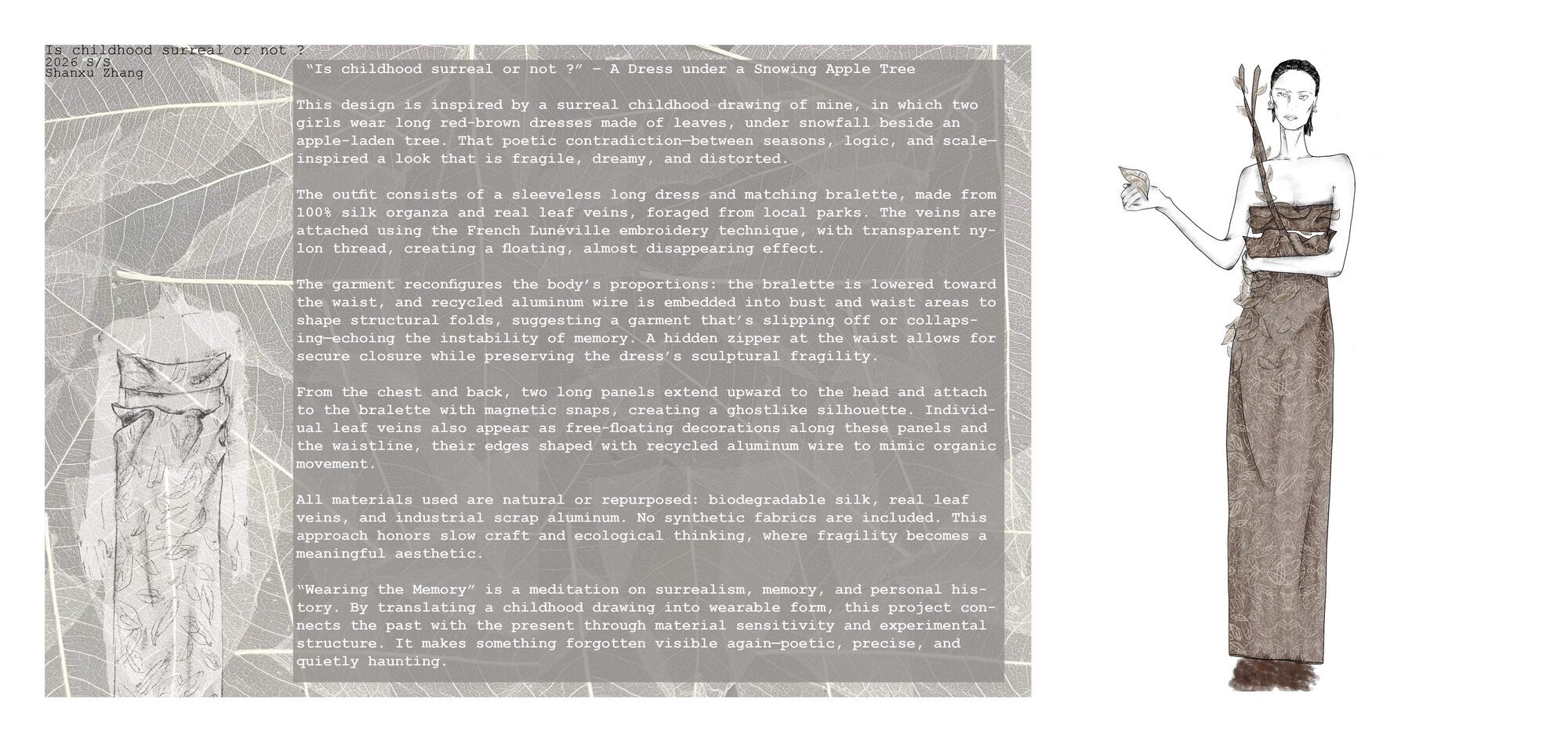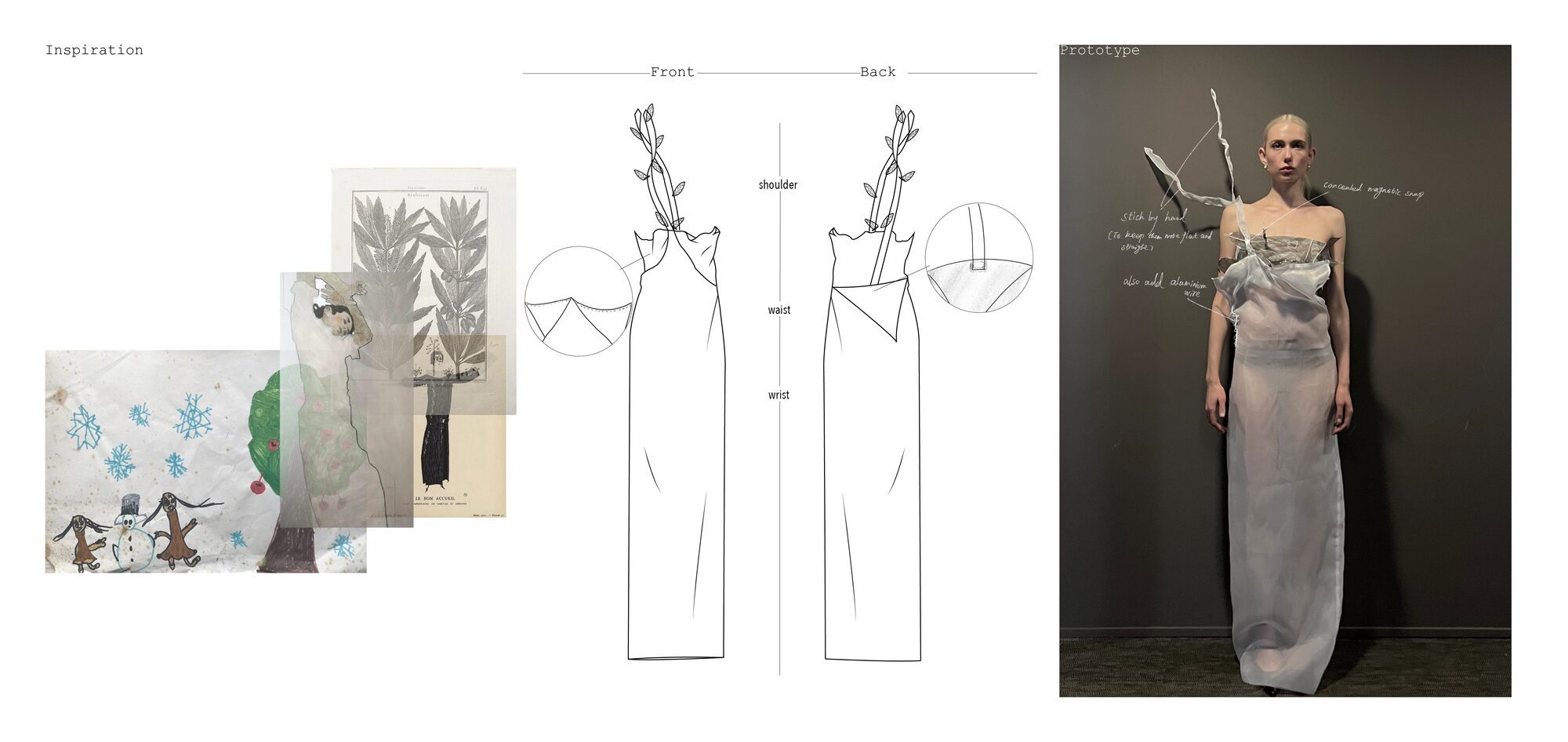Is Childhood Surreal or Not_Shanxu Zhang
Category: Apparel
This design is inspired by a surreal childhood drawing of mine, in which two girls wear long red-brown dresses made of leaves, under snowfall beside an apple-laden tree. That poetic contradiction—between seasons, logic, and scale—inspired a look that is fragile, dreamy, and distorted. The outfit consists of a sleeveless long dress and matching bralette, made from 100% silk organza and real leaf veins, foraged from local parks. The veins are attached using the French Lunéville embroidery technique, with transparent nylon thread, creating a floating, almost disappearing effect. The garment reconfigures the body’s proportions: the bralette is lowered toward the waist, and recycled aluminum wire is embedded into bust and waist areas to shape structural folds, suggesting a garment that’s slipping off or collapsing—echoing the instability of memory. A hidden zipper at the waist allows for secure closure while preserving the dress’s sculptural fragility. From the chest and back, two long panels extend upward to the head and attach to the bralette with magnetic snaps, creating a ghostlike silhouette. Individual leaf veins also appear as free-floating decorations along these panels and the waistline, their edges shaped with recycled aluminum wire to mimic organic movement. While the initial leaf processing involved traditional handcraft materials, I have also explored slower, more sustainable alternatives. These include soaking leaves in water over 15 days to naturally decompose the pulp, followed by brushing along the veins. I have also experimented with soda ash, wood ash water, and natural degreasing soap solutions for softening, as well as citrus juice (lemon) combined with sun exposure for gentle bleaching. These non-toxic, biodegradable methods reflect my ongoing commitment to reducing environmental impact through every step of the making process. Moving forward, I aim to further refine these low-impact techniques and fully transition to zero-waste, regenerative material practices. All materials used are natural or repurposed: biodegradable silk, real leaf veins, and industrial scrap aluminum. No synthetic fabrics are included. This approach honors slow craft and ecological thinking, where fragility becomes a meaningful aesthetic. “Wearing the Memory” is a meditation on surrealism, memory, and personal history. By translating a childhood drawing into wearable form, this project connects the past with the present through material sensitivity and experimental structure. It makes something forgotten visible again—poetic, precise, and quietly haunting.



 Copy URL
Copy URL
 Login to Like
Login to Like 